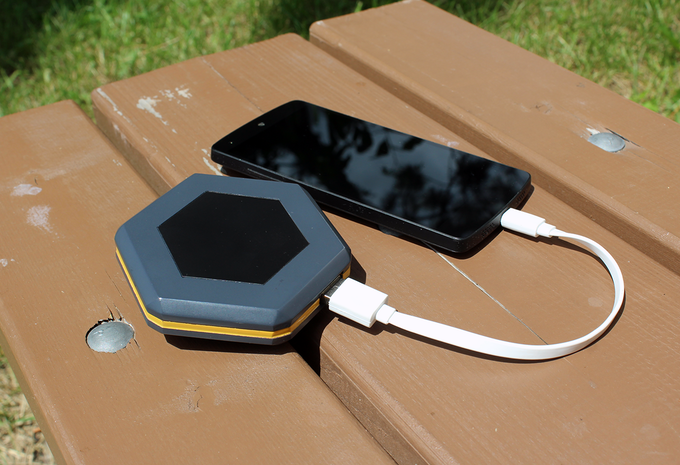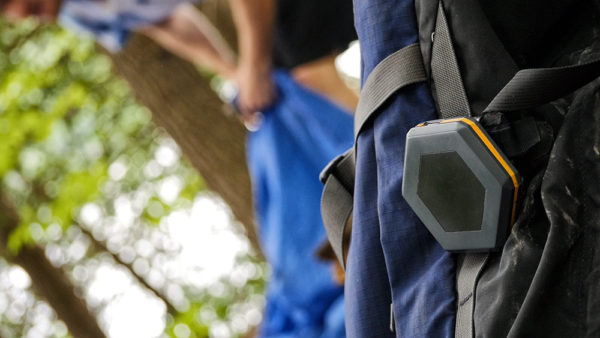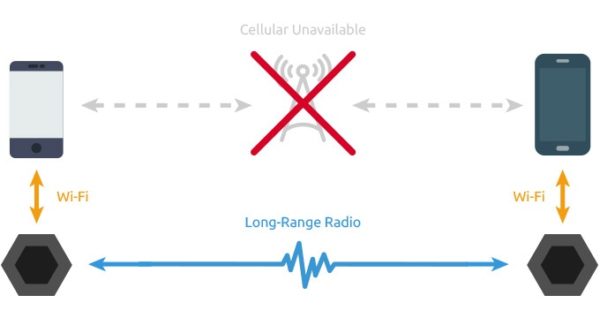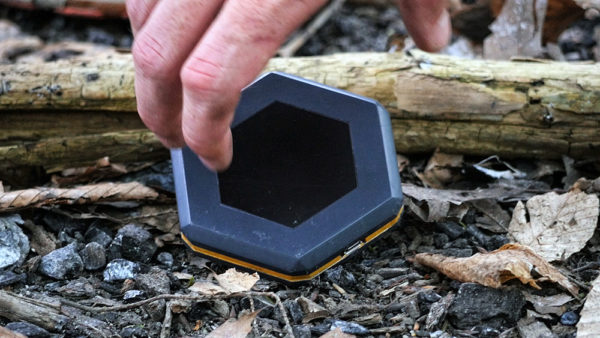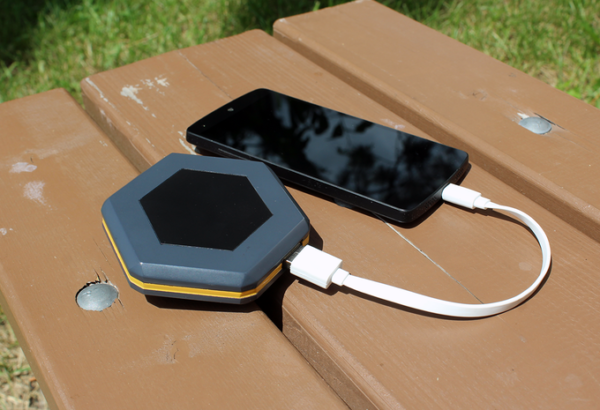The device-to-device Sonnet pairs via WiFi to most smartphones to allow data transmission and connectivity even when there is no mobile or cellular data grid in range. Designed to keep hikers and bikers connected when traveling in remote areas at a fraction of the cost of a satellite phone, the Sonnets utilizing low power, long range radio frequencies to connect one device in the wilderness back to one in civilization. In addition to direct user-to-user communication, the Sonnet also makes maps available offline, and even has an SOS function in case of backcountry emergencies. Click past the break for more….
The Sonnet essentially brings long range radio wave technology into the 21st century, sending cellular data over radio waves. Sonnet has an app that will be available for iPhone and Android, though the app itself isn’t necessary to use the device. It was designed this way specifically to prevent users without the app from needing a download in an area that lacks signal, which is of course where Sonnets are meant to be used in the first place. For users without the app on their phones, person-to-person chat can be accessed from any smartphone web browser, and is hosted locally within each Sonnet device. All data messages are end to end encrypted using AES, and the device-to-phone WiFi is WPA/WPA2 secured. Sonnet runs using a form of embedded Linux, which is developer-friendly, but once their Kickstarter campaign is complete, they do plan on releasing an SDK, allowing users to build new app features for use with their devices.
Range between two Sonnets is quoted at 5km/3mi, although they are quick to point out that this range can be nearly doubled if there is a line of sight between them, such as both devices being on mountain tops. Using mesh networking Sonnets can leap-frog encrypted data through other Sonnets in range to reach the intended recipient, without the third-party Sonnets being able to access the information. And since Sonnets use wifi, laptops can also connect and communicate, not just phones.
Knowing that Sonnets will see most use in rural and remote areas, they built in an offline maps database should someone get lost. Users can even track their progress on the maps to retrace their steps back to where they started. Further enhancing the safety element of the Sonnet is its panic button. By holding the panic button for 5 seconds, the Sonnet will broadcast an SOS signal which will alert all other users within range that someone is in distress, as well as broadcast a current GPS location.
The Sonnet uses a 4000mAh battery and features a USB port for charging smartphones on the go. Quoted usage time is around 36 hours, so you’ll want to make sure to charge it before any major excursions, and probably carry a backup battery for adventures. It has earned an IP-66 water and dust resistance rating, which surpasses most current smartphone waterproof ratings, and should keep it functional through most weather events. Measuring 88mm/3.5″ across and weighing just 160g/5.6oz the Sonnet is light & easy to pack. With their Kickstarter having been fully funded in just over 24 hours, they will go into production with deliveries expected in the latter part of 2017. Pricing is fairly reasonable at $45 each or $89 for a pair, though Kickstarter backers have options for 3- and 5-packs, since their functionality is determined by other users, the more that sell the better.
